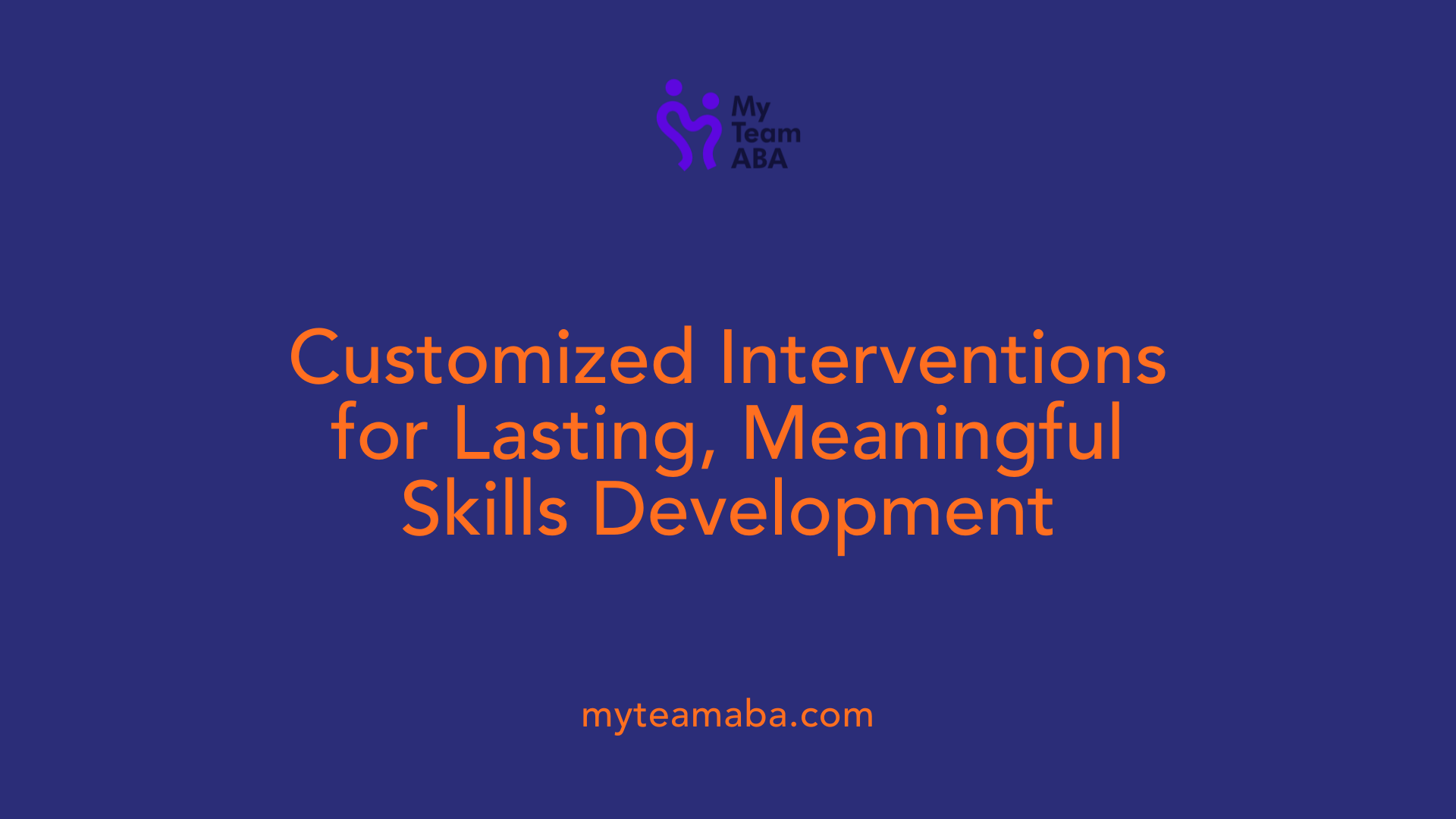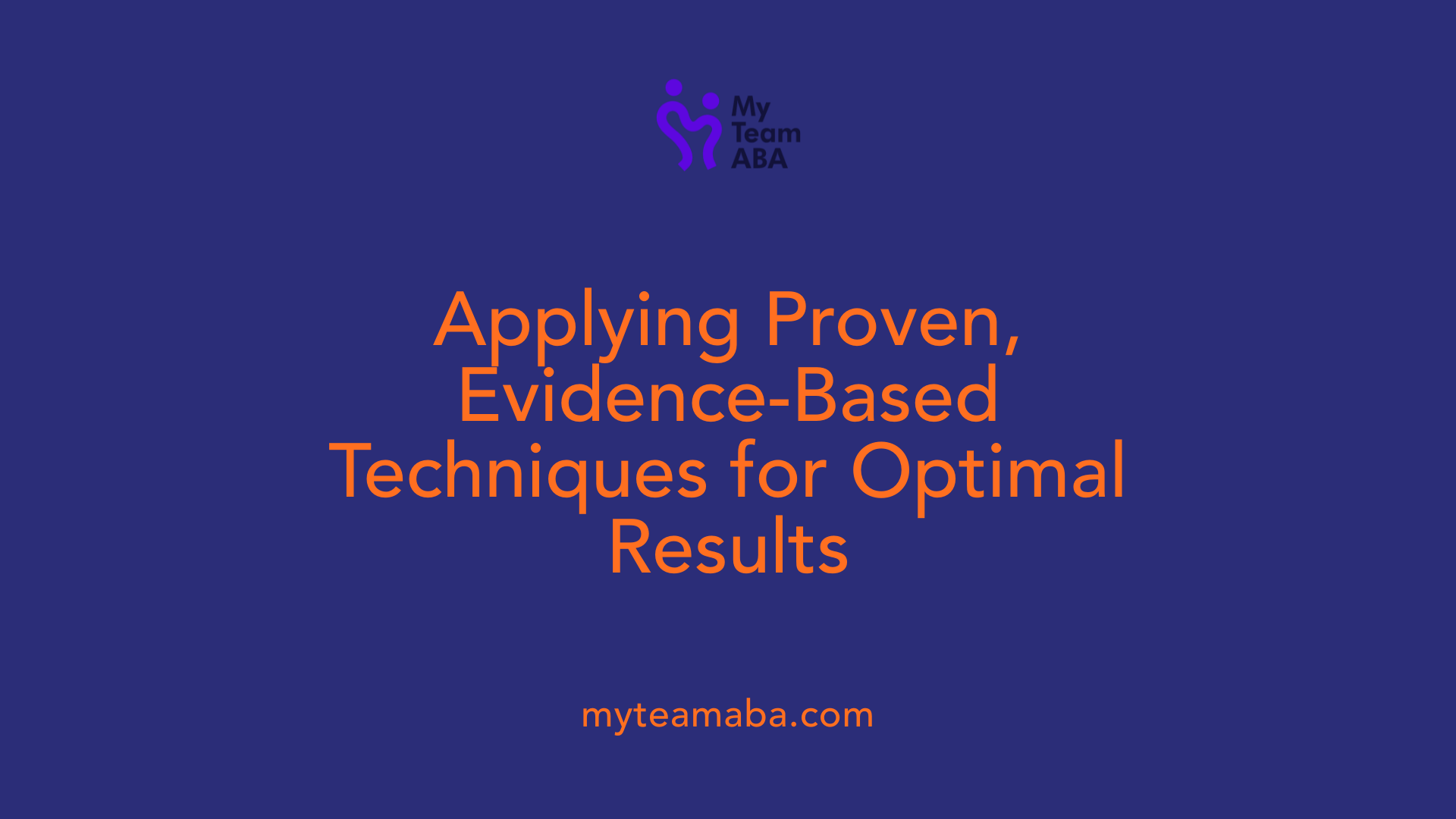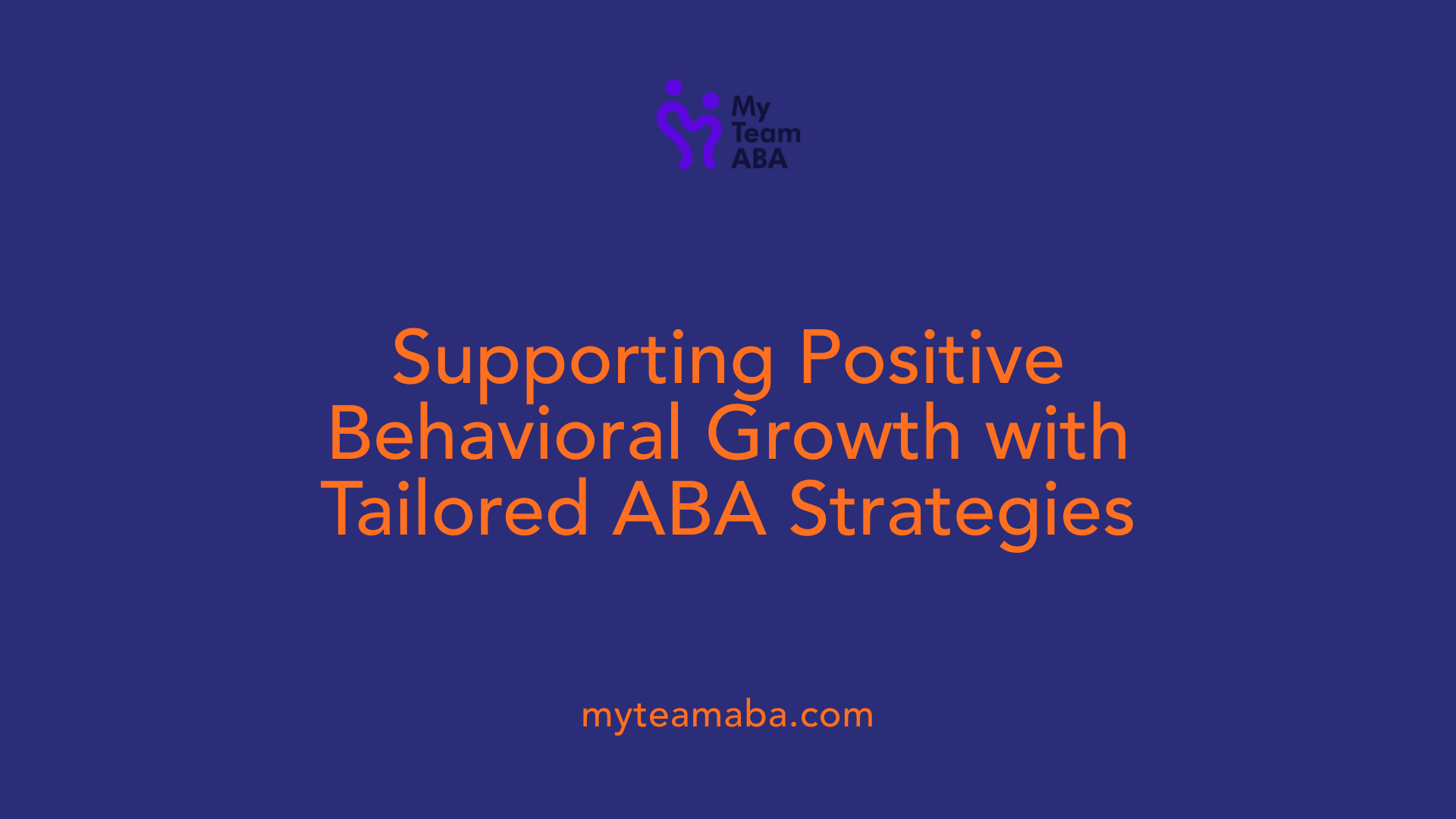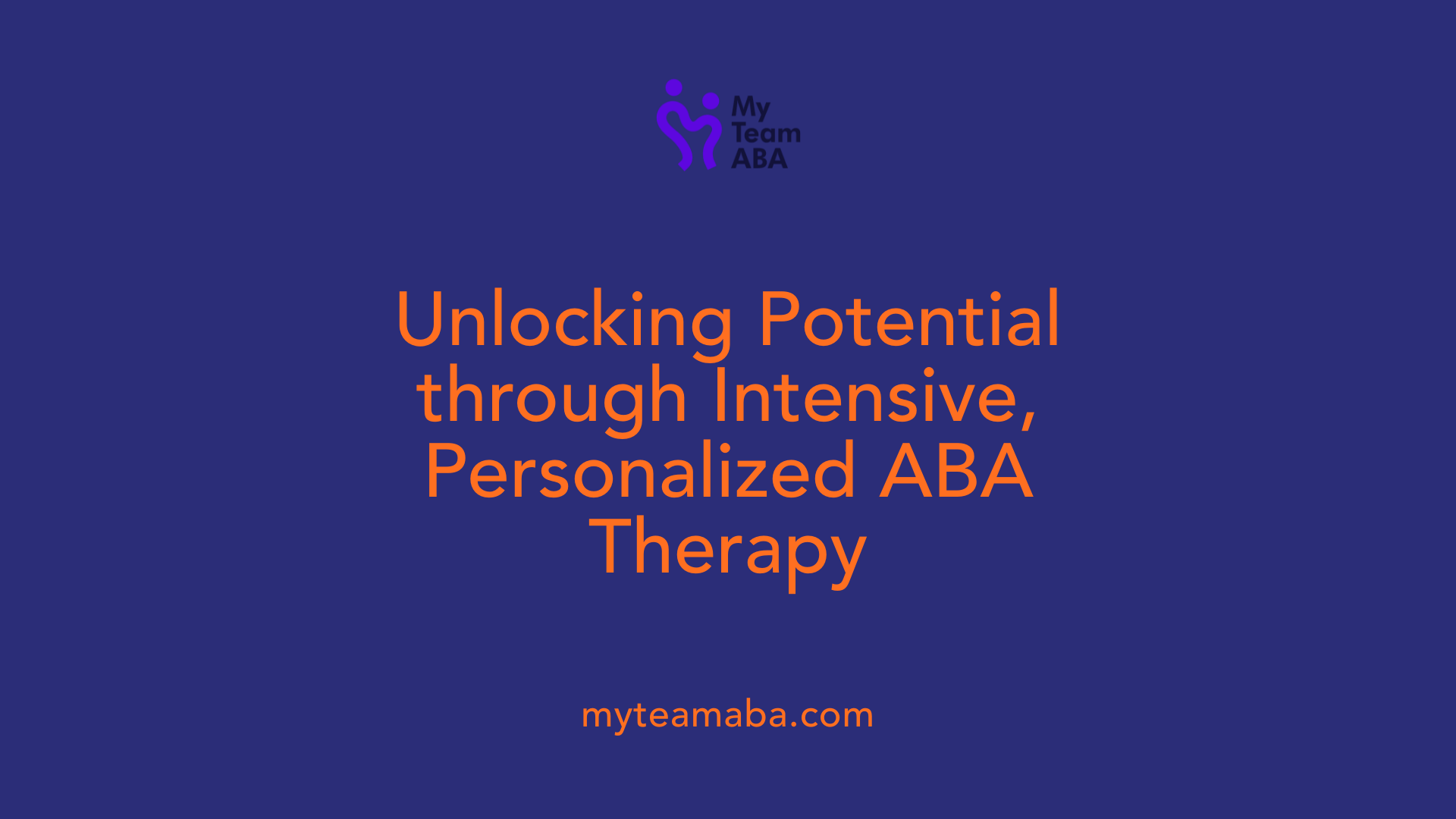The benefits of individualized behavior interventions in ABA therapy
November 2, 2025
Unlocking Potential: The Power of Custom-Tailored ABA Strategies

Introduction to Individualized ABA Interventions
Applied Behavior Analysis (ABA) stands out as a cornerstone of effective intervention for individuals with autism spectrum disorder (ASD). Its scientifically validated framework allows for the customization of treatment plans tailored to each individual's unique needs, fostering significant improvements in communication, social skills, and behavioral challenges. This article explores the core benefits of individualized ABA interventions, the techniques used, and how personalized strategies can profoundly impact the lives of individuals with ASD.
The Foundation of Personalized ABA Therapy
What is the purpose of an individualized treatment plan in ABA?
An individualized treatment plan in ABA is essential for tailoring interventions to meet each child's specific needs. It begins with comprehensive assessments that identify a child's strengths, challenges, and behavioral goals. Based on these insights, therapists, families, and caregivers collaboratively set targets that are meaningful and achievable, focusing on areas such as communication, social skills, or self-care.
This personalized approach ensures that therapy is relevant and effective. It allows for the selection of appropriate techniques, such as Discrete Trial Training (DTT), Pivotal Response Training (PRT), or the Early Start Denver Model (ESDM), which are best suited to the child's unique profile.
A key aspect of these plans is their adaptability. As progress is monitored through ongoing data collection, strategies can be adjusted to better support the child's development. This continuous feedback loop helps address emerging needs and reinforces gains made in therapy.
Involving the family in planning is crucial. They provide valuable insights about the child's daily routines and preferences, which help to personalize interventions further. Family involvement and consistent implementation across environments foster generalization of skills and enhance overall outcomes.
Overall, the purpose of an individualized ABA treatment plan is to create a structured, flexible roadmap that guides therapy towards meaningful, lasting improvements in behavior and functioning. It ensures that every aspect of intervention aligns with the child's specific developmental profile, maximizing the benefits of ABA therapy.
Tailoring Interventions to Promote Meaningful Skills

How do personalized ABA strategies improve outcomes for individuals with autism spectrum disorder?
Customized Applied Behavior Analysis (ABA) approaches are vital for helping individuals with autism reach their full potential. By focusing on each person’s unique strengths and challenges, tailored ABA interventions specifically target priority skills such as communication, social interaction, and daily living skills.
One major advantage of personalized strategies is their ability to produce meaningful improvements in essential areas. For example, interventions may teach a non-verbal child to communicate using speech or alternative systems like picture exchange communication (PECS). They also help develop social skills like turn-taking and sharing, which are critical for building relationships.
Research shows that intensive, individualized ABA therapy—averaging 25 to 40 hours weekly over one to three years—can lead to significant gains. Children often improve in IQ, language, and adaptive skills, enabling them to better participate in school, home, and community settings.
The ongoing data collection inherent in ABA allows therapists to regularly evaluate progress and adjust goals or techniques accordingly. This responsiveness ensures that interventions remain relevant and effective, helping each individual reach milestones that promote independence.
While more research is needed to understand the long-term effects of personalized ABA, existing evidence strongly supports its role in enhancing core skills. By targeting specific needs and continuously refining strategies, personalized ABA can lead to better quality of life and greater inclusion for individuals with ASD.
Evidence-Based Techniques in Individualized ABA

What are evidence-based practices and techniques used in individualized ABA therapy?
In ABA therapy, evidence-based practices (EBPs) refer to methods that are supported by strong scientific evidence demonstrating their effectiveness. These techniques are grounded in rigorous research, including controlled studies, systematic reviews, and meta-analyses. The goal of using EBPs is to ensure that interventions provide measurable benefits to individuals with ASD and other developmental challenges.
Common approaches include positive reinforcement, which encourages desired behaviors by offering rewards; functional behavior assessments (FBAs) to identify the reasons behind challenging behaviors; and task analysis, which breaks complex skills into smaller, manageable steps to teach them gradually.
Additionally, visual supports like schedules and picture communication systems assist learning and communication, especially for children who benefit from visual cues. Naturalistic interventions, such as the Early Start Denver Model (ESDM), incorporate learning into everyday activities and interactions, making therapy more realistic and engaging.
The importance of fidelity and data collection
Implementing these techniques with high fidelity—that is, accurately and consistently—is essential for successful outcomes. Therapists follow structured protocols to ensure that strategies are delivered as intended. Continuous data collection is a core component, allowing clinicians to track progress precisely over time.
Data is collected regularly to measure the child's responses and milestones. This ongoing monitoring helps therapists determine whether an intervention is effective or if adjustments are necessary. Detailed data analysis enables personalized modifications to maximize benefits and ensure that each child's unique needs are met.
Customization based on individual goals and needs
ABA is highly personalized, with treatment plans tailored to each individual's specific goals, strengths, and challenges. Clinicians collaborate with families and other providers to set realistic, meaningful objectives.
The selection of techniques depends on the child's age, developmental level, behavioral profile, and family preferences. For example, a child with communication delays might benefit from PECS or speech-focused interventions, while a child struggling with social skills might engage in social skills training or peer interactions.
This individualized approach ensures that interventions are relevant, feasible, and aligned with the child's and family's priorities. Regular review of data and progress allows continuous refinement of strategies, leading to more effective and meaningful outcomes for each person.
Behavioral Changes and Skill Acquisition

How do tailored ABA interventions support behavioral challenges?
Customized ABA programs are designed to meet the unique needs of each individual, which is especially important for addressing behavioral challenges. These interventions start with comprehensive assessments, such as functional behavior assessments (FBAs), to identify the specific reasons behind problematic behaviors.
Through collaboration with caregivers and the individual, therapists develop targeted strategies that address the root causes of behaviors. This personalized approach ensures that interventions are meaningful and realistic within the individual's daily routines.
Interventions combine proactive techniques like positive reinforcement and replacement behaviors. For example, if a child tantrums to escape a task, ABA strategies might teach the child more appropriate ways to request a break.
Behavioral techniques are often applied in natural settings—home, school, or community—to promote generalization and lasting change. Regular data collection during sessions helps monitor progress and adjust strategies as needed.
Involving parents and caregivers is crucial. They are trained to implement behaviors, reinforce skills, and support consistency across environments. This shared effort significantly boosts the success and longevity of behavioral improvements.
Overall, personalized ABA interventions effectively reduce problematic behaviors, enhance social interaction, and promote positive behavioral growth, making daily life more manageable and fulfilling for individuals with ASD.
Supporting Development Through Focused Interventions

What types of focused interventions like Social Skills Training (SST) and Picture Exchange Communication System (PECS) are effective?
Focused behavioral interventions such as SST and PECS play a crucial role in improving specific skills in individuals with ASD. SST emphasizes teaching social skills like sharing, turn-taking, and understanding social cues, thereby enhancing peer interactions and social confidence. PECS, on the other hand, is designed to improve communication by allowing individuals to exchange pictures or symbols to express needs and desires, especially useful for non-verbal children.
These interventions are often employed as part of a broader ABA program, and they are tailored to meet each child's unique needs. They are typically delivered in naturalistic settings, making learning more intuitive and relevant to daily life.
Why is early intervention and family involvement important?
Early intervention with ABA techniques, especially during crucial developmental periods, significantly boosts the probability of positive outcomes. When families participate actively—for example, by practicing strategies at home, attending training sessions, and maintaining consistency—the effectiveness of therapy increases.
Family involvement helps reinforce skills learned during therapy, facilitating generalization across environments and routines. It also helps reduce parental stress by providing tools and confidence to support their child's growth.
How does long-term ABA therapy impact skills and independence?
Long-term ABA therapy, often involving 25-40 hours per week over several years, has been shown to produce substantial improvements in cognitive abilities, language, social skills, and daily living independence. These effects are especially notable when interventions are intensive and personalized.
Children and adults who undergo extended ABA therapy often develop skills that allow them to participate more fully in community and educational settings. Over time, many individuals gain greater independence and self-confidence, reducing reliance on caregivers and increasing their quality of life.
Additional insights into tailored ABA programs
| Intervention Type | Focus Area | Typical Population | Main Benefits |
|---|---|---|---|
| SST | Social Skills | Children & Teens | Increased peer interactions, improved social understanding |
| PECS | Communication | Non-verbal or minimally verbal individuals | Enhanced expressive skills, reduced frustration |
| EIBI (Early Intensive Behavioral Intervention) | Cognitive & Adaptive Skills | Young children | Increased IQ, language, and adaptive functioning |
| P-ESDM | Developmental & Behavioral | Young children with ASD | Improved language, cognition, social skills |
Personalized ABA programs involve assessment, data collection, and continuous adjustment, ensuring that interventions respond dynamically to each individual's progress. The participation of family members and caregivers remains vital for maximizing the effectiveness of these interventions.
The Role of Family and Community Support in ABA Success
How do individualized ABA interventions support behavioral challenges?
Personalized ABA programs play a crucial role in addressing behavioral challenges by focusing on the specific reasons behind each individual's behaviors. These tailored strategies involve thorough assessments, including functional behavior assessments (FBAs), to identify the triggers and functions of problematic behaviors.
Once the causes are understood, trained ABA therapists create behavior intervention plans (BIPs) that are customized to meet the individual's needs. These plans use behavioral techniques such as positive reinforcement, replacement behaviors, and proactive strategies designed to promote more appropriate responses.
Involving caregivers and family members in the process enhances the effectiveness of interventions. Training parents and caregivers allows them to implement strategies consistently across settings, ensuring that behavior change is meaningful and lasts over time.
Naturalistic and routine-based approaches, such as in-home or community settings, make the interventions relevant and easier to generalize into everyday life. This comprehensive, personalized approach not only helps reduce challenging behaviors but also promotes social participation and greater independence.
Parent-mediated interventions and training
Parents are central to the success of ABA therapy. Parent-mediated interventions teach caregivers how to apply behavioral techniques learned during therapy sessions. This training empowers parents to become active participants in their child's progress.
Programs like P-ESDM (Parent-implemented Early Start Denver Model) demonstrate that when parents are involved, children exhibit improvements in social interaction, communication, and reduction in autism symptoms. Regular coaching, feedback, and support from therapists help ensure that parents feel confident and competent in applying intervention strategies.
Parents who are well-informed and involved tend to see faster progress, as they can reinforce skills across natural environments and daily routines. The active role of families fosters consistency, which is vital for the maintenance and generalization of learned skills.
Community resources like support groups and workshops
Community involvement enhances the impact of ABA therapy by providing additional support, education, and networking opportunities. Support groups enable families to share experiences, exchange practical tips, and receive emotional support from others facing similar challenges.
Workshops, seminars, and conferences organized by local organizations or national agencies offer updated information on the latest research, intervention techniques, and policy changes. These resources help families stay informed about best practices and emerging therapies.
Community events foster a sense of belonging and reduce feelings of isolation, which can be common among families facing developmental challenges. Access to resources such as respite care, educational programs, and advocacy services can significantly alleviate stress and improve family well-being.
Enhancing generalization and maintenance of skills
For lasting success, skills learned through ABA must transfer across different settings and last over time. Family and community involvement is vital in this process.
Parents continue to practice behavioral strategies at home, social skills are reinforced in community settings such as parks or playgroups, and school-based programs build on therapeutic gains. Consistent reinforcement and practice in varied environments help individuals internalize skills.
Therapists and families work together to develop plans for ongoing maintenance, including booster sessions, community outings, and peer-based activities. This approach ensures that behaviors are not only acquired but also maintained, promoting greater independence and quality of life.
Maximizing Therapeutic Outcomes with Individual Focus

Why is the importance of intensive therapy, ongoing assessments, and family involvement vital in ABA?
Intensive ABA therapy, often involving 25-40 hours weekly, is crucial, especially in early childhood, to maximize developmental gains. Regular assessments—such as functional behavior assessments (FBAs)—help monitor progress and identify new goals, allowing therapists to tailor interventions effectively. Family involvement significantly boosts therapy success; when parents and caregivers are trained to apply behavioral techniques at home, children receive consistent support that reinforces learning and behavior change. Active participation from families ensures strategies are relevant and easily integrated into daily routines, leading to more meaningful and sustained improvements.
What are the benefits of a blended approach combining individual and group therapy?
A combined approach that mixes one-on-one and group ABA sessions provides a well-rounded intervention. Individual therapy offers personalized attention, immediate feedback, and strategies tailored to a child's specific needs, which is particularly beneficial for children with severe challenges or high support requirements. Group therapy fosters social interaction, peer learning, and naturalistic play, which are essential for developing social skills like sharing, turn-taking, and cooperation. This blend creates a comprehensive environment where children can develop foundational skills and social competence simultaneously, promoting generalization of skills across settings.
How does ABA therapy foster long-term benefits such as independence and improved quality of life?
Research indicates that long-term ABA interventions lead to notable gains in independence, daily living skills, and emotional regulation. By systematically teaching life skills—such as self-care, communication, and problem-solving—individuals with ASD are better equipped to navigate daily challenges. Over time, these skills foster greater self-confidence and reduce reliance on caregivers, enhancing overall quality of life. Families often experience decreased stress as children become more capable of managing routines and behaviors. The focus on durable skills ensures that benefits extend into adulthood, empowering individuals to lead more autonomous, satisfying lives.
| Aspect | Details | Benefits |
|---|---|---|
| Therapy Intensity | 25-40 hours/week, usually over 1-3 years | Significant improvements in cognitive, language, and social skills |
| Assessments | Functional Behavior Assessments (FBAs), ongoing progress tracking | Customized interventions to meet evolving needs |
| Family Involvement | Parent training, home practice, support groups | Reinforces learning, enhances motivation |
| Therapy Approach | Individual + group blend, evidence-based techniques | Broad skill development, social, and adaptive skills |
| Long-term Impact | Increased independence, emotional regulation, quality of life | Greater autonomy, improved well-being |
This adaptable, family-centered, and comprehensive approach ensures that ABA therapy maximizes benefits and supports each individual’s journey toward greater independence and happiness.
Conclusion: Tailored Strategies for Lasting Impact
Personalized ABA interventions are integral to fostering meaningful and sustainable improvements in individuals with ASD. By customizing goals, techniques, and plans based on each person's unique profile, these interventions maximize engagement, effectiveness, and overall quality of life. Ongoing data collection, family involvement, and adherence to evidence-based practices ensure that therapy remains adaptive and goal-oriented. As research continues to demonstrate the profound benefits of individualized approaches, it becomes clear that tailored interventions are essential for unlocking each individual's full potential and supporting their lifelong development in both clinical and everyday settings.
References
- Behavioral Interventions for Autism Spectrum Disorder
- Behavior Interventions | Applied Behavioral Analysis
- Who Benefits Most from ABA Therapy? A Detailed Guide
- Applied Behavior Analysis (ABA) | Autism Speaks
- Group vs. Individual ABA Therapy for Children With Autism
- 7 Surprising Benefits of ABA Therapy for Kids You Need to Know
- Applied Behavior Analysis in Children and Youth with Autism ...
- The Impact of ABA Therapy on Children With Autism | PMT
- Applied Behavior Analysis (ABA) | Autism Speaks
